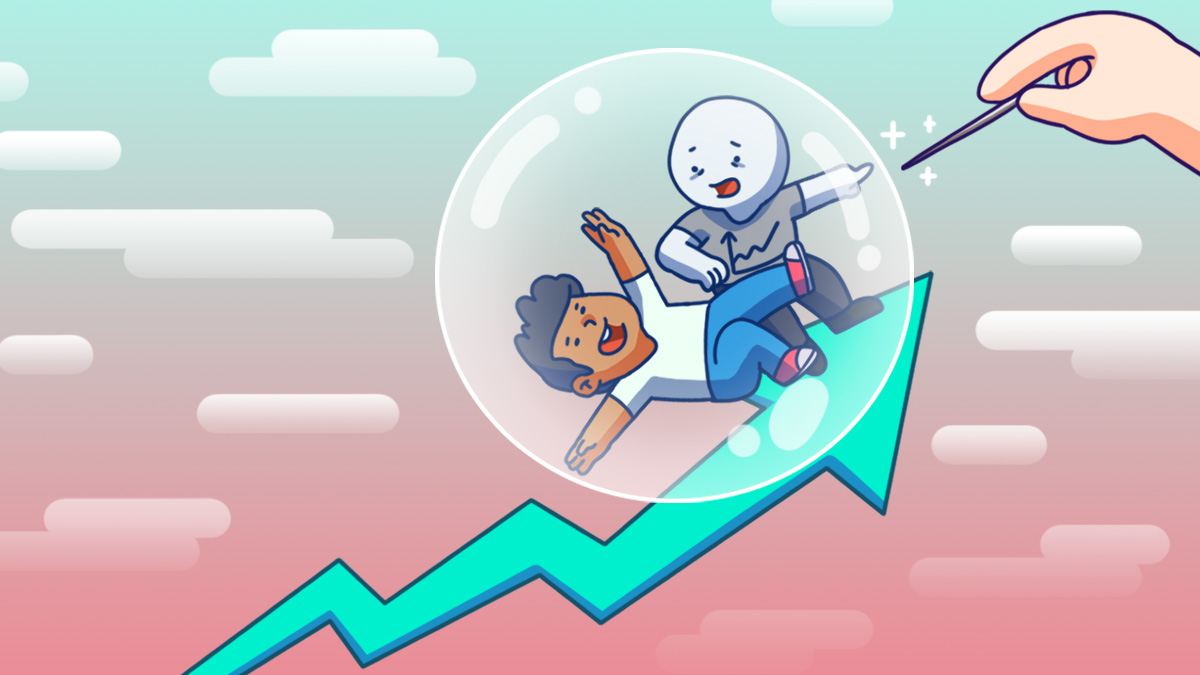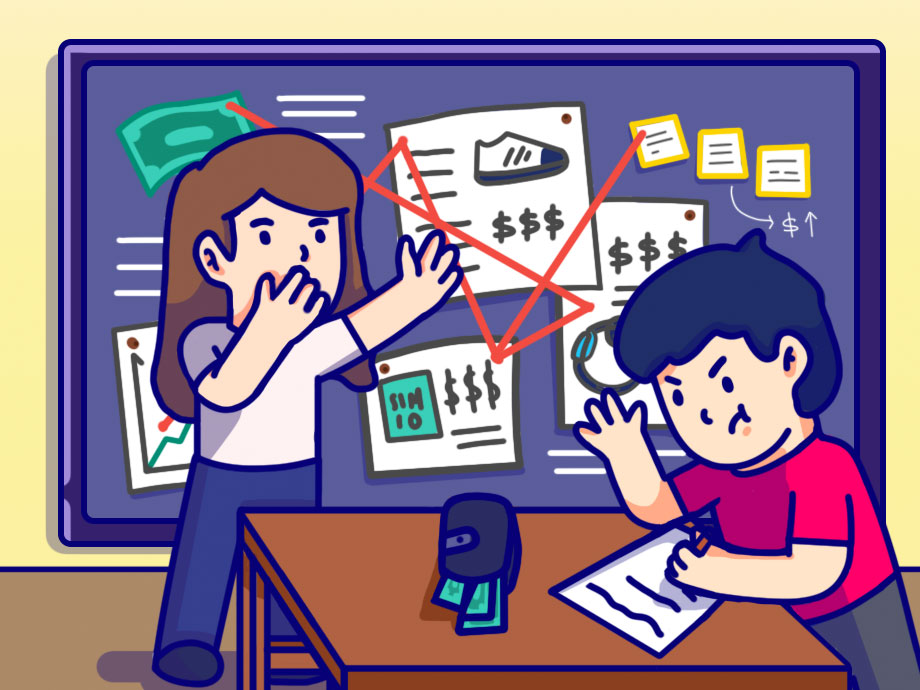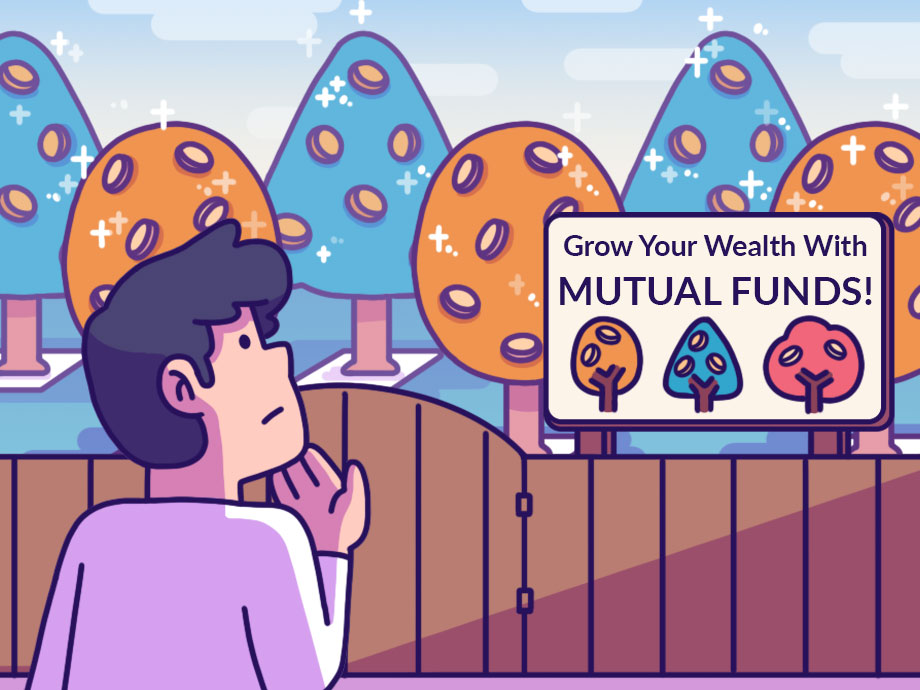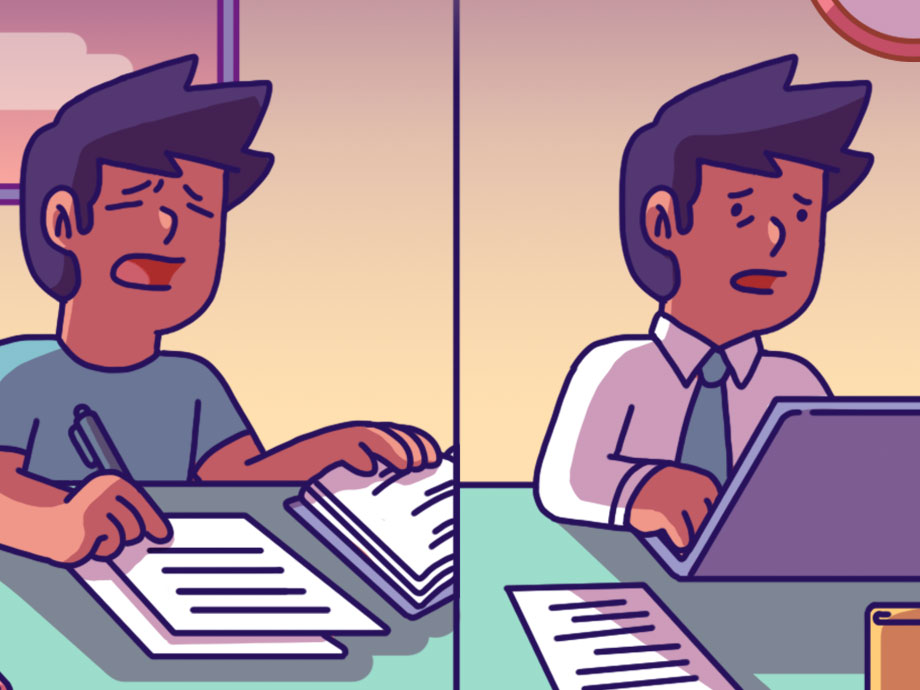Investing | Article
Are We In a Stock Market Bubble?
by The Simple Sum Team | 15 Feb 2021 | 6 mins read

The pandemic has wreaked havoc around the world and completely upended our daily lives. But it seems that the stock market didn’t get the memo.
In fact, global stock markets ended 2020 higher than pre-pandemic levels. Surreal, isn’t it? For the average investor, the reality on the ground and rising stock prices don’t quite add up. So it’s no surprise that a faction of investors are speculating that there’s a stock market bubble frothing on the horizon.
You’ve probably heard the word “bubble” thrown around a lot when it comes to stocks or other assets (think Bitcoin). But what are bubbles, really? And how can we tell whether a particular stock or asset is in a bubble? We’ll get into that here.
What’s a Stock Market Bubble?
Simply put, a bubble starts to form when a stock’s price goes up significantly higher than what the stock is actually worth, based on that stock’s current and future earning potential. And if investors think that the stock’s price will continue going up, they may still buy it at the already-high price just to earn some short-term returns. And so, the bubble grows.
For example, if a $30 bottle of wine starts gaining popularity because of hype or herd mentality, people may think that this particular bottle of wine will become more expensive in the future, and rush to buy more bottles. Since there’s a limited supply, the wine’s price goes up.
At first, it goes from $30 to $100, then from $100 to $500, and before you know it, the bottle of wine now costs $2,500. All because everyone wants that bottle of wine (and not because of the value or actual worth of that wine).
But what happens when someone really famous, like Kim Kardashian, publicly says that the wine is terrible? Her followers who bought the wine may start jumping off the bandwagon and sell the wine to a willing buyer. And as more people try to get rid of their wine, its price falls rapidly.
Similarly, when a shock event happens or when people lose interest in a stock and start taking profits, the stock’s price will start going down. As the stock’s price keeps falling, more and more people start selling — either to preserve their gains or to cut their losses. When this happens on a large scale, the stock bubble bursts.
Case in Point: The 2001 Dot-Com Bubble
The US has experienced a number of stock market bubbles over the years. And one of the most infamous bubbles was the 2001 dot-com bubble.
In the early 2000s, a general media frenzy drummed up investor enthusiasm over the future of Internet companies, and, you’ve guessed it, the stock prices of dot-com companies went up as a result.
It also didn’t help that interest rates were low at the time, and investors looking to make a quick return (known as speculative investors) also jumped on the bandwagon, driving dot-com stocks’ prices even higher. The Nasdaq (which is an index that’s mostly made up of tech stocks) went up five times from 1995 to 2000.
When the dot-com bubble eventually burst, the Nasdaq in October 2002 had lost 80% of its value, compared to its peak in March 2000.
At the time of writing, there are fears that some pockets of the stock market are approaching another bubble. The S&P 500 Index and Nasdaq have hit record highs, while Tesla has grown by 6.5x from a year ago. Even in other asset classes, such as cryptocurrencies, people fear a bubble as Bitcoin has crossed US$46,000.
So, if you’re invested in the stock market, or Tesla, or Bitcoin, or even just watching from the sidelines, you might be asking: Are we currently in a bubble…or not?
How to Tell if a Stock or an Asset Is in a Bubble
The thing is, it’s really difficult to determine whether we’re in a bubble now, especially when investors’ sentiments are still very positive. Furthermore, many investors, analysts, and fund managers still think there’s a runway for further gains. In fact, investors say there’s more potential for gains in stocks because interest rates are really low right now and central banks are still stimulating the economy.
But there are some indicators you may want to use to decipher whether there’s a chance that a stock’s price might fall rapidly in the near-term.
While stocks can go up for a variety of reasons — low-interest rates, supply shortage, increased potential earnings — a key sign to watch out for is increased speculative investor behaviour. Translation: When people begin buying into a stock or an asset just for the sake of trying to make short-term gains, as was the case with GameStop recently. Such skyrocketing stock prices look great, but they never last.
Another indicator you can consider using is the Buffet Indicator. Warren Buffett’s rule is that if the value of the US stock market exceeds the forecasted US gross domestic product (GDP), it’s too expensive.
How to Prepare for a Possible Bubble Burst
Regardless of whatever metrics you choose, do your due diligence and research before investing in a stock. Beyond a stock’s rising price, review the company’s fundamental drivers of value such as its business model.
If you find that a stock’s value doesn’t justify the market enthusiasm for it after you’ve done your research, you might want to avoid buying it just because everyone else appears to be.
If you’re investing in the broader market, you may want to consider averaging the cost of your investment. For instance, instead of putting all your money into an S&P 500 ETF when it’s at a high, you can choose to invest only a portion of your money first and then buy more into the index periodically when it goes down.
Essentially, you should check your FOMO and don’t just follow the crowd. You don’t want to be caught in a position where you’ll lose more money than intended when the bubble bursts.














